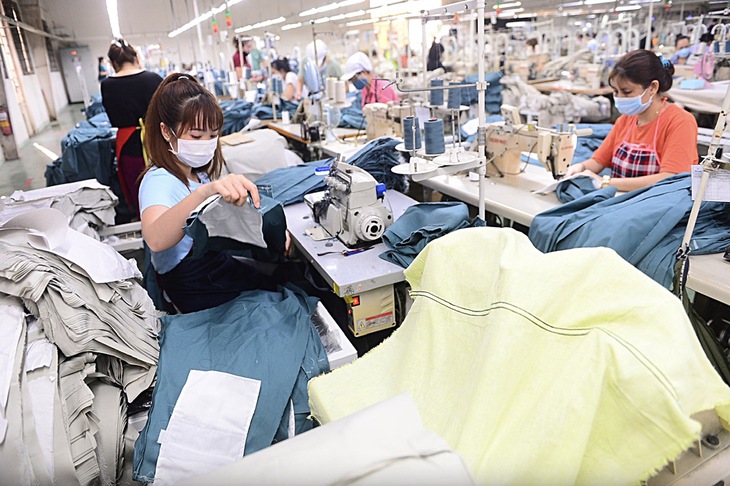
The textile and garment industry is accelerating the restructuring of its supply chain, prioritizing investment in domestic raw materials to enhance self-reliance - Photo: QUANG DINH
Textile and garment businesses agree that they cannot continue to rely on traditional outsourcing models or depend on external raw material sources. To survive and develop sustainably, they must proactively adapt and transform themselves more strongly.
Proactive supply chain management
According to Mr. Tran Nhu Tung, Chairman of the Board of Directors of Thanh Cong Textile, Investment and Trading Joint Stock Company (TCM), the company has early on shifted towards a closed-loop production chain, self-sufficient from cotton import, spinning, weaving, dyeing to cutting and sewing, thereby not depending on raw materials from a specific country. Thanks to this, the company can prove the domestic origin of its products, an important factor in minimizing tariff risks.
"If it can be proven that 100% of the input materials originate from Vietnam, the export tax to the US will be significantly reduced," Mr. Tung said, but acknowledged that most domestic textile and garment businesses are small and medium-sized enterprises and are therefore still operating in a purely processing capacity, while their raw materials and components still depend on imports.
Sharing the same view, Mr. Pham Quang Anh, director of Dony Garment Company, assessed that in the context of increasing geopolitical instability, investing in localization is no longer an option but a "necessary requirement". According to him, self-reliance will become a strategic weapon for businesses to survive and develop sustainably in the face of unpredictable changes.
"We are still in the 'trying to do' phase, not yet in the 'having to do' phase. But only when faced with a compelling situation can people achieve extraordinary things," Mr. Quang Anh said, and at the same time posed the question: "If we don't start now, when will we reach the goal?"
"Low price" is no longer an advantage.
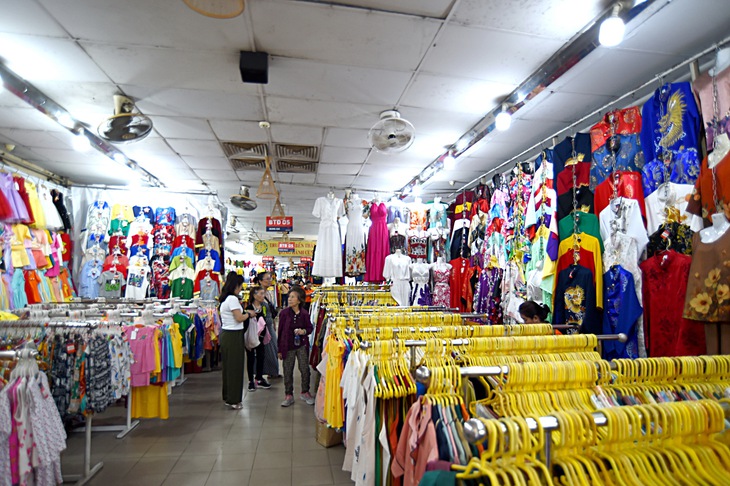
Vietnam's textile and garment industry aims to increase the localization rate. (In the photo: clothing vendors at Ben Thanh Market, Ho Chi Minh City) - Photo: TU TRUNG)
From the perspective of industry associations, Mr. Pham Van Viet, permanent vice president of the Ho Chi Minh City Textile, Garment and Embroidery Association, believes that the Vietnamese textile and garment industry is facing the urgent need to restructure its supply chain towards domestic integration, aiming to reduce dependence on imported raw materials from potentially risky foreign markets.
Mr. Viet particularly emphasized the "domestic nearshoring" model – developing a closed-loop production chain within the country, encompassing everything from yarn, weaving, dyeing, and finishing to logistics and green finance. Ho Chi Minh City, with its existing infrastructure and resources, can take the lead by establishing a green fashion industrial park that meets ESG standards, integrating a quality control center, logistics, e-commerce, and carbon finance tools.
"The textile and garment industry cannot continue to maintain the FOB (Free On Board) model – which has low profit margins and is easily replaced by lower-cost countries like Bangladesh and Myanmar," Mr. Viet analyzed. Therefore, the survival path for businesses is to shift from FOB to ODM (Design to Order), and then to OBM (Building and Selling Own Brands in the Global Market).
However, to achieve this transformation, Mr. Viet believes a "major overhaul" of policies and management thinking is needed. The state needs to shift from an administrative management role to creating an ecosystem where businesses are not isolated but closely connected from raw materials, production, design to logistics and e-commerce.
"We cannot continue with the old ways. The Vietnamese textile and garment industry must enter a new phase – proactive, innovative, and sustainable. Only when we master branding, technology, and supply chain data can we truly have a voice in the global market," Mr. Viet affirmed.
Textile and garment exports maintain stable growth momentum.
Despite the challenges in the first five months of 2025 regarding consumer demand and tariffs, textile and garment exports still recorded stable growth. According to the Vietnam Textile and Garment Association, the total export value of the industry reached nearly 17.6 billion USD, an increase of 9% compared to the same period in 2024; garment exports alone reached 13.82 billion USD (an increase of 11.6%), fabric exports increased by 6%, while fiber exports decreased slightly.
The US continues to be the largest export market with nearly $7 billion (up 17%). Other key markets such as the EU, Japan, and ASEAN all recorded double-digit growth. Currently, Vietnamese textile and garment products are present in 132 countries and territories. Experts attribute this achievement to the flexible adaptation efforts of businesses in the context of a volatile global economy .
Taking advantage of the 17 signed FTAs (16 of which are currently in effect), businesses are accelerating efforts to meet rules of origin to benefit from preferential tariffs. Many businesses expect to achieve two-thirds of their annual profit targets in the third quarter to prepare for upcoming market fluctuations.
Source: https://tuoitre.vn/det-may-muon-tang-tu-chu-nguyen-lieu-20250710080626073.htm


![[Photo] Two flights successfully landed and took off at Long Thanh Airport.](/_next/image?url=https%3A%2F%2Fvphoto.vietnam.vn%2Fthumb%2F1200x675%2Fvietnam%2Fresource%2FIMAGE%2F2025%2F12%2F15%2F1765808718882_ndo_br_img-8897-resize-5807-jpg.webp&w=3840&q=75)







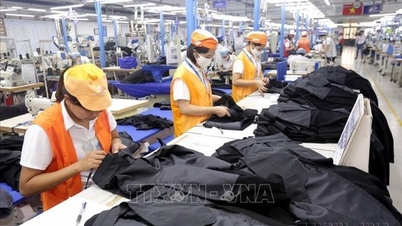





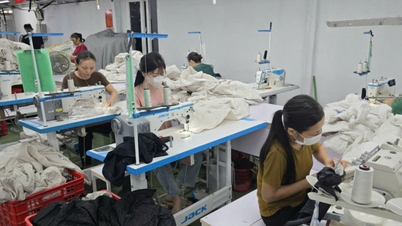























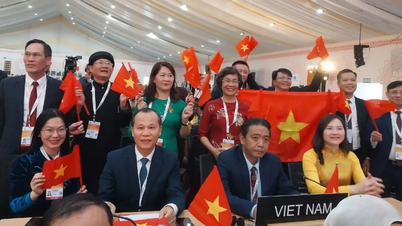


















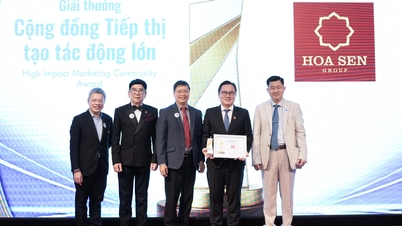

















































Comment (0)